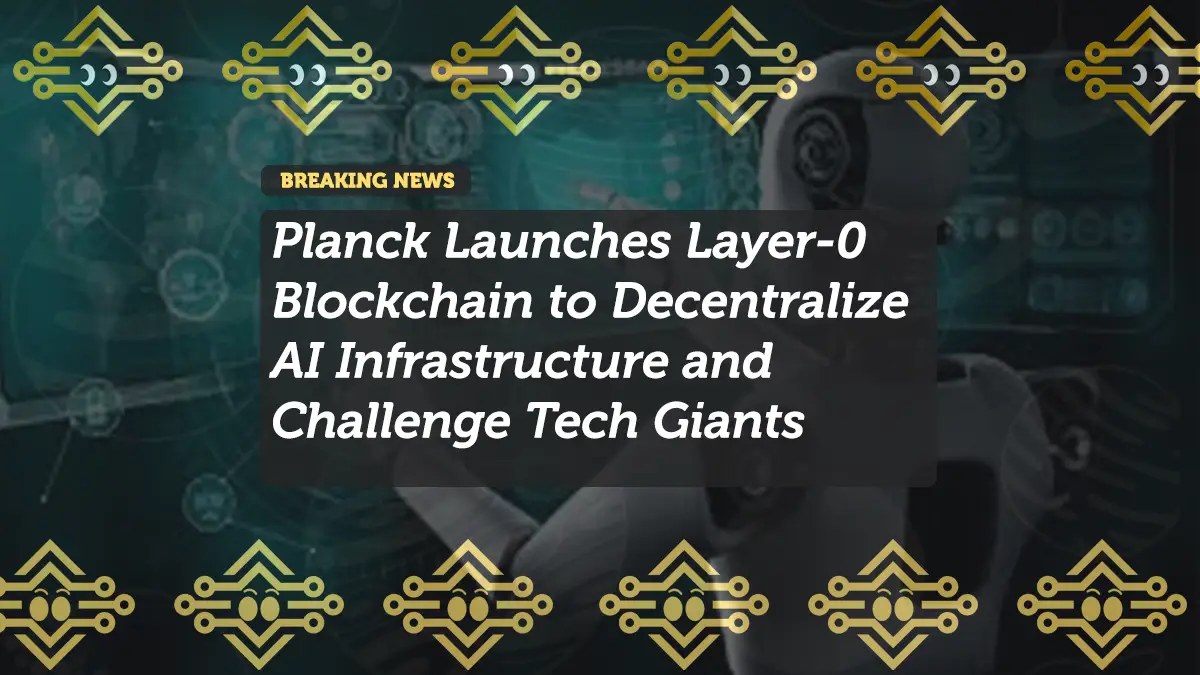
Planck Launches Layer-0 Blockchain to Decentralize AI Infrastructure and Challenge Tech Giants
The Planck layer-0 blockchain has officially launched, introducing a foundational infrastructure layer specifically designed for artificial intelligence applications. This development represents a significant step toward decentralizing AI infrastructure currently dominated by centralized tech giants like OpenAI and Google.
According to Planck’s announcement, the blockchain leverages a network of global processing units worth $230 million to create a decentralized alternative to traditional cloud computing services. This layer-0 architecture serves as the bedrock for decentralized physical infrastructure networks (DePINs) that combine hardware, token incentives, and distributed processing.
Addressing Centralization in AI Infrastructure
The Planck layer-0 blockchain directly confronts a critical industry challenge: AI compute centralization. As a Planck spokesperson explained, “Currently, high-performance AI compute is heavily centralized in the hands of a few tech giants.”
This centralization creates several problems:
- Limited access to computing resources for smaller developers
- Vendor lock-in for AI model training and deployment
- Lack of transparency in AI development processes
- Concentration of power among major technology companies
Planck’s infrastructure aims to democratize access to AI resources through its decentralized network model.
How the Planck Network Operates
The Planck layer-0 blockchain functions through a sophisticated ecosystem:
- GPU Operators: Individuals and organizations contribute computing resources to the network
- Token Incentives: Operators earn Planck’s native token based on two metrics:
- Proof-of-connectivity (machine uptime)
- Proof-of-delivery (actual utilization)
- Cost Efficiency: Planck’s hourly, on-demand model offers up to 90% cost savings compared to traditional cloud services
Since February 2025, Planck has generated $1.5 million in revenue, primarily from GPU rental services. This rapid monetization demonstrates strong market demand for decentralized AI infrastructure.
Competitive Landscape in Decentralized AI
Planck enters a growing field of blockchain projects addressing AI decentralization:
- Bittensor: Focuses on decentralized machine learning networks
- Fetch.ai: Facilitates AI agent creation through decentralized platforms
- Asic Network: Merged entity of Fetch.ai, SingularityNET, and Ocean Protocol
- Vast.ai/CoreWeave/Lambda: Traditional GPU rental competitors
What distinguishes Planck is its layer-0 approach—providing foundational infrastructure rather than building on existing blockchains. This positioning allows for greater customization and performance optimization for AI workloads.
Economic Model and Market Opportunity
The Planck layer-0 blockchain generates revenue through multiple streams:
- Transaction fees for compute resource allocation
- SDK usage fees for developers building on the platform
- Developer tooling subscriptions
- GPU rental commissions
This diversified model addresses the current AI chip shortage by creating a global marketplace for underutilized computing resources. The $230 million network of processing units represents significant capacity that can be dynamically allocated to AI training and inference workloads.
Real-World Applications and Adoption
The most promising applications for Planck’s infrastructure include:
- DePIN Projects: Decentralized physical infrastructure networks requiring distributed compute
- AI Model Training: Cost-effective training of large language models and vision systems
- Edge AI Processing: Distributed inference for IoT and mobile applications
- Research Institutions: Affordable access to high-performance computing resources
Several early adopters have already integrated Planck’s infrastructure, particularly in fields requiring specialized AI processing that benefits from decentralized resource allocation.
Technical Advantages Over Traditional Cloud
Planck offers several technical advantages compared to conventional cloud providers:
- Cost Efficiency: 90% cost reduction through direct resource matching
- Scalability: Dynamic resource allocation across global network
- Privacy: Decentralized processing reduces data centralization risks
- Resilience: Distributed infrastructure avoids single points of failure
These advantages become increasingly important as AI workloads grow more complex and resource-intensive.
Final Thoughts: A New Foundation for Decentralized AI
The Planck layer-0 blockchain represents more than just another crypto project—it offers a fundamental rethinking of AI infrastructure. By creating a decentralized foundation layer, Planck enables truly distributed AI development that aligns with Web3 principles.
As the AI industry continues its explosive growth, the need for decentralized infrastructure becomes increasingly apparent. Planck’s approach—leveraging existing hardware through token incentives—provides a practical pathway toward more open and accessible AI development.
While challenges remain in scaling and adoption, the launch of Planck’s layer-0 blockchain signals an important shift in how the industry approaches AI infrastructure. The success of this model could reshape the competitive landscape, giving smaller developers and researchers unprecedented access to high-performance computing resources.
















